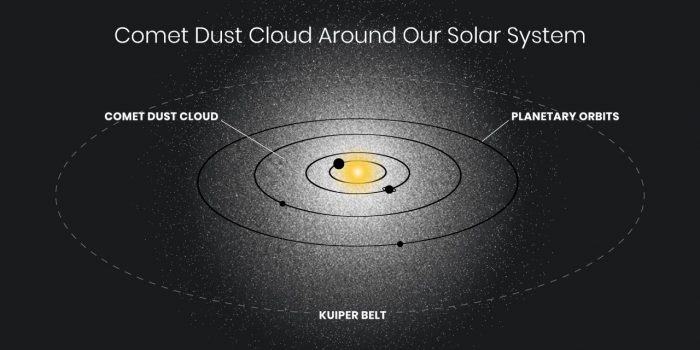According to a new analysis of Hubble data, there’s too much light in the space around the Solar System.
This light is being called the ‘ghost light’ and it has not been attributed to any light-emitting body yet.
There is an excess light present and it has been confirmed after analyzing 200,000 Hubble images and taking thousands of measurements in a project called SKYSURF.
So far, the consensus is that it is due to the dust component of the Solar System that hasn’t been directly detected yet. These tiny particles of dust and ice make a population of comets traveling inwards from the dark parts of the Solar System, reflecting sunlight and generating a subtle, global glow.

“If our analysis is correct there’s another dust component between us and the distance where New Horizons made measurements. That means this is some kind of extra light coming from inside our Solar System,” says astronomer Tim Carleton of Arizona State University.
“Because our measurement of residual light is higher than New Horizons, we think it is a local phenomenon that is not from far outside the Solar System. It may be a new element to the contents of the Solar System that has been hypothesized but not quantitatively measured until now.”
Voyager I found an excess of brightness associated with hydrogen at the boundary of the Solar System. There’s the New Horizons detection.
“More than 95 percent of the photons in the images from Hubble’s archive come from distances less than 3 billion miles from Earth. Since Hubble’s very early days, most Hubble users have discarded these sky-photons, as they are interested in the faint discrete objects in Hubble’s images, such as stars and galaxies,” says astronomer and Hubble veteran Rogier Windhorst of Arizona State University.
“But these sky-photons contain important information which can be extracted thanks to Hubble’s unique ability to measure faint brightness levels to high precision over its three decades of a lifetime.”
The team searched for hidden galaxies and discovered that not enough galaxies were missed to account for the extra light.

The resulting excess was equivalent to a steady glow given off by 10 fireflies across the entire sky.
“When we look up at the night sky, we can learn a lot about the Earth’s atmosphere. Hubble is in space,” says astronomer Rosalia O’Brien of Arizona State University.
“When we look at that night sky, we can learn much about what is happening within our galaxy, our Solar System, and on big scales as the whole Universe.”
The three published SKYSURF papers have been published in The Astronomical Journal and The Astrophysical Journal Letters. A fourth paper has been submitted to The Astronomical Journal and is not published yet. It can be found on the preprint server arXiv.


